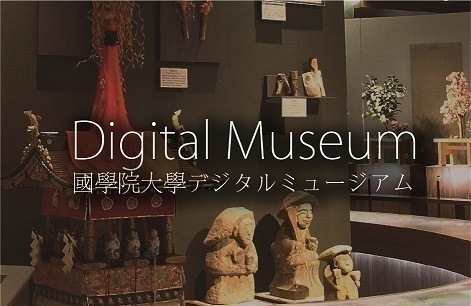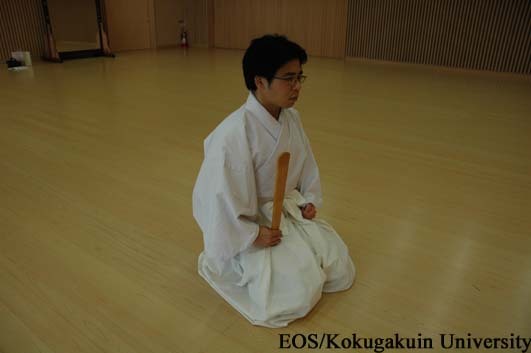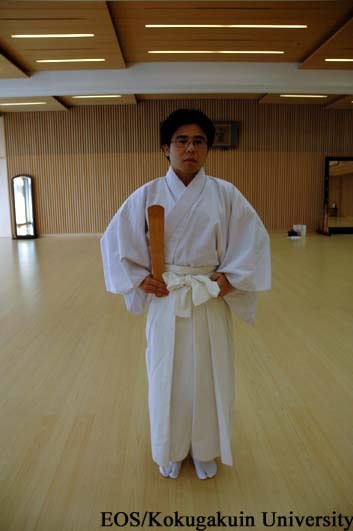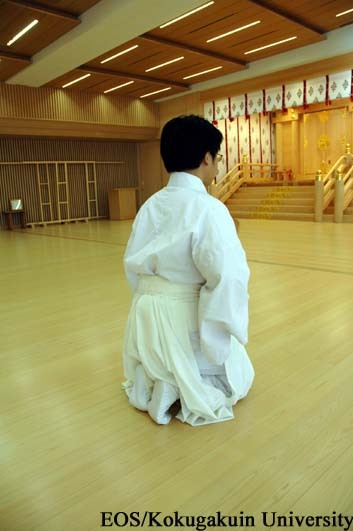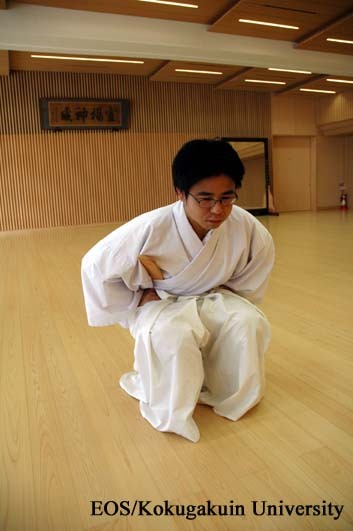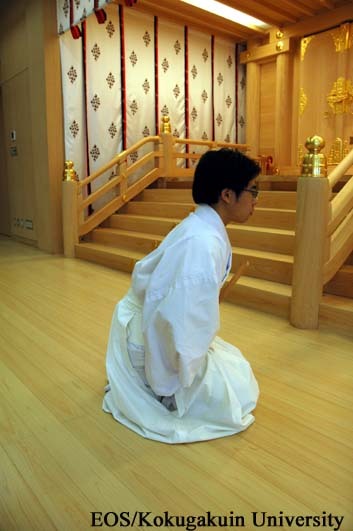- トップ
- Encyclopedia of Shinto
- The Ritual Etiquette of Shinto Priests
Encyclopedia of Shinto
| Main Menu: | |
| Links: |
詳細表示 (Complete Article)
| カテゴリー1: | 1. General Introduction |
|---|---|
| カテゴリー2: | Special Topics |
| カテゴリー1: | Special Topics |
| カテゴリー2: | Special Topics |
| Title | The Ritual Etiquette of Shinto Priests |
| Text | The protocol of a Shinto priest's actions during Shrine rites and rituals is prescribed in great detail. With regard to posture alone, for example, the rules of the Association of Shinto Shrines (jinja honchō) stipulates five different poses: seiza, chokuritsu, kikyo, sonkyo, and shikō. The formal sitting style known as seiza and the formal manner of standing known as chokuritsu are the same in Shinto as they are in secular Japanese society today. The other three, however, are postures particular to Shinto and need more explanation. Kikyo (or hizamatsuku in its verb form) is a manner of formal sitting in which the knees remain together while sitting back on heels, as in seiza, but with the tips of the toes pointed and bearing the person's weight. Priests assume this posture when preparing ritual implements, and installing or removing objects from a shrine. Sonkyo (or uzukumaru in its verb form) is a manner of squatting on the balls of one's feet with one's knees spread apart. Priests assume this posture when preparing ritual implements in the shrine's garden. When facing an altar/kami diagonally, priests assume the Shikō posture, holding the ritual scepter (shaku) if male or the ritual fan (ōgi) if female in a particular manner. Even the details of seiza are minutely prescribed: priests must kneel with one big toe overlapping the other, knees slightly apart if male or together if female, and with the right hand resting on the right thigh and left hand on the left thigh. There are also three different styles of ambulation: hokō, kukkō, and shikkō. Hokō is similar to our everyday manner of walking, while the kukkō-style of walking is performed with a slight bend at the waist, and shikkō is a style of "walking" in which one advances while remaining in the kikyo seated position. |




